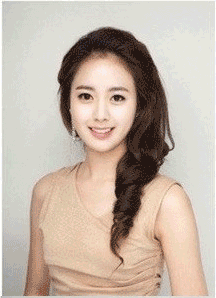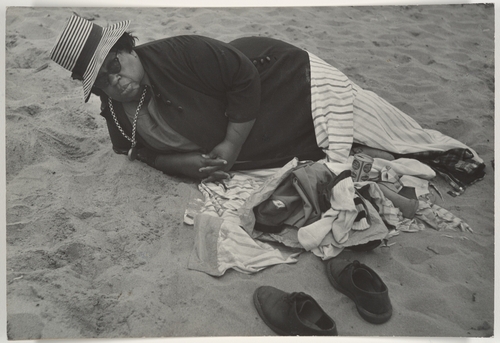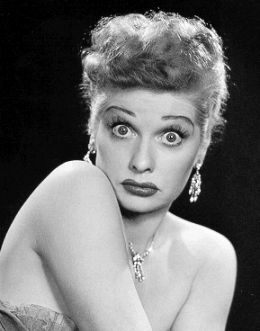Presented by the Asian / Pacific / American Institute at NYU and Museum of Chinese in America
June 25, 2013
Accompanying the concurrent fashion exhibitions at the Museum of Chinese in America, “Front Row: Chinese American Designers†and “Shanghai Glamour: New Women 1910-40s,†the Museum hosted an ethnically and professionally diverse panel of fashion writers who deal with aspects of race in their work, of which this is a summary.
In her introduction, the Museum’s Executive Director, Helen Koh, humorously addressed the rapidly shifting perception of Asians in America and abroad: slowly but surely, the image of the Chinese laundry is shifting to that of the rising Chinese designer such as Jimmy Choo, Derek Lam, Phillip Lim, Anna Sui and Yeohlee Teng, to name but a few—not to mention the increased marketing energy focused on the Chinese population of one-billion-plus. While there is certainly a dark, oppressive, commercial and insidious nature of fashion and appearance, this panel attempted to address how fashion can enact positive change.
Minh-Ha T. Pham (one half of one of my favorite smart fashion blogs, Threadbared), spoke about Chinese representation in fashion blogs. She rightly asserted that the increasingly common inclusion of bloggers at runway shows has diversified the range of editorial coverage; likewise, the self-published blog format has given visibility to minorities like Asians and women of color in their street style blogs and personal outfit posts: Susanna Lau (a.k.a. “Susie Bubbleâ€) and Bryan Grey Yambao (a.k.a. “BryanBoyâ€) are prime examples of increasingly familiar Asian bloggers from across the globe (Lau and Yambao are British Chinese and Filipino, respectively).
With this success and visibility, however, comes predatory commercialization and the danger of the unethical appropriation of Asian blogger styles and trademarks. For example, BryanBoy’s standard pose showing off his own designer purses was co-opted by Fendi for a series of purse ads. Of course, the Fendi ad replaced the spindly gay Asian boy with a spindly white (presumably heterosexual) woman—suggesting that Asians (and ethnic minorities generally) are still prone to being white-washed, essentially erased by corporate marketing in the final product, even when they provided the inspiration. Fendi never asked permission of BryanBoy to appropriate his recognizable pose, much less offered monetary compensation—though it certainly gave Fendi prestige and street cred precisely because the sassy hooked elbow would be recognized by many as BryanBoy’s style, thereby suggesting, however subtly, BryanBoy’s endorsement of the products. Oddly, it was not BryanBoy who caught the uncanny similarity in the Fendi ads, but his fans, who, after ascertaining he had not participated in the campaign, subsequently launched their own blogging counterattack to call attention to the purloined pose. Pham was ultimately optimistic that, however haltingly, Asians are redefining themselves as creative originals, and slowly shedding their stigma as professional counterfeiters.
The following speaker, Ashley Mears, has been a working model and who now writes and teaches about race and gender within the modeling world. She confirmed what most people suspect: that there is a huge variance in model pay that literally values paler races over others. She showed some photos from when she traveled with fashion scouts who typically seek out girls ages 13 to 18 in Siberia and Eastern Europe: cold climates with pale inhabitants (the German immigrants of South Brazil are also very popular, such as Gisele Bundchen). She projected a series of photos she took of model casting calls and model schools (it might be difficult to see in my photo, but all the girls are looking quite awkward in their underwear):
Mears suggested that model schools operating in small towns offer hope (however unrealistic) to economically depressed young women; the collapse of the Soviet Union in the 1990s opened that country to the world and there was a corresponding increase in Soviet model applicants (it didn’t hurt that the pale skin, willowy limbs, and large eyes of Eastern European women conform to contemporary beauty standards and model scouting criteria). Soviet women also had less belief in upward mobility and so were prime targets for exploitation.
While Mears approved of sites like Jezebel which are policing racially and sexually egregious fashion images (blackface shoots, etc.), she acknowledged that cultural logic does influence the races chosen for particular model projects: Western models seem to be more comfortable posing in lingerie, while more Japanese women appear in cosmetics ads. It is also not uncommon for the Asian runways to be testing grounds for emerging models, who may appear in Tokyo fashion shows before graduating to the more prestigious fashion markets of Paris, London, and New York.
Mimi Thi Nguyen (the other half of Threadbared) spoke about hoodies and African American life, concentrating on how the Trayvon Martin case (which had not yet concluded) has fueled this discussion in the public eye lately, with competing stories and the hoodie becoming a racially loaded sartorial symbol. During the trial there was a proliferation of people (often otherwise “innocentâ€-seeming like children and the elderly) posing in hoodie photos in solidarity, sometimes accompanied by “do I look suspicious?†text, and posted online:
While it can be read as a distracting detail, the activist hoodie photo campaigns and other social media incorporating the hoodie handle (“#MillionHoodies†Twitter and Facebook tags), the humble hoodie has become a potent illustration of the relationship between black life and black death in America, not to mention the impact of social media upon justice movements.
The last speaker, Sharon Heijin Lee, spoke about social media as well, though as a potentially unchecked source for misinformation. Lee is interested in Korean plastic surgery and opened her lecture with a widely shared GIF of nearly-identical faces of Korean beauty pageant contestants with variations on the headline “Has Plastic Surgery Made These 20 Korean Beauty Pageant Contestants Look The Same?â€
Lee is quick to correct a widely repeated inaccuracy: these are not Miss Korea contestants at all, but rather contestants in Miss Daegu, a Korean province. And yes, they’re all very pale and have similar eye shapes and “eerily†similar smiles that can easily be read as racist Americans not being able to tell the difference between non-whites, or evidence of Korea’s plastic surgery obsession, but it’s also true that the same could be said about Miss USA contestants: this might be more of a pageant look than an entire country’s.
Lee points out that Psy’s K-Pop sensation “Gangnam Style†video pokes fun at Gangnam, the Korean equivalent of Beverly Hills. Half of Korea’s plastic surgeons are located in Gangnam, and Psy’s parody is (a hilarious and dangerously catchy) critique of South Korea’s consumerism in clothes and plastic surgery:
Lee introduced me to a new video as well, an SNL digital short “Plastic Face†(set to the tune of Lady Gaga’s “Poker Faceâ€) by K-Pop band Brown Eyed Girls. While it is definitely tongue-in-cheek—they show pre-surgery photo of themselves and call out other Korean dignitaries (men included) who have had work done, is it ultimately just another ad for plastic surgery?
In reaction to these and other more insidious examples of Korea’s plastic surgery obsession, a feminist Facebook group, Korean Womenlink, has been trying not to blame women for their supposedly innate narcissism, and rather to enact preventative political policies. This echoed a theme of the night: that social media is a double-edged sword with the capacity to spread homogenized images of thin white women, but also to educate and empower disenfranchised racial and social groups.
While you already missed this event and must rely upon my Reader’s Digest version, the accompanying exhibitions at the Museum of the Chinese in America will be on view until September 29, so you still have time to visit them yourself!





































1 comment
Emaan khan says:
Feb 16, 2022
Great article! I like it, I also recommended Austin trim for amazing labels and many more.